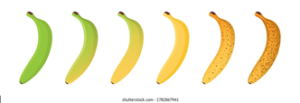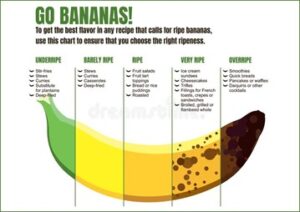If you’ve tasted a perfectly ripened fruit, you can understand why it’s sought after; rich flavor, superior texture, aromas and color can elevate an ordinary meal to a delicious meal.
Acquiring a perfectly ripened fruit can be tough sometimes because, unless you cut it open, it can be difficult to visually see the level of ripeness. Furthermore, ripening fruit at home can be a challenge as some fruit doesn’t ripen once it’s picked.
Without getting too in-depth on the science portion of it all here is the simple fact: fruit ripens with the release of the plant hormone ethylene, which is a gas. Fruit is divided into two basic categories climacteric (ripen off the plant) and non-climacteric (ripen while attached to the tree/vine). Some fruits don’t produce much ethylene, like oranges and lemons; while others such as bananas and avocadoes can ripen in the blink of an eye.
Berries, citrus and grapes are considered non-climacteric (sugars come from the parent plant) while avocadoes, peaches and bananas are considered climacteric (become sweeter once taken off the parent plant). A series of changes happens within a fruit to allow ripening. Depending on the fruit it could be sweetness, acidity, juice, depth of color or rich aromas.
In general, you should look for pieces that are bright in color, slightly firm in texture and mild to strong aroma.
We’ve listed some popular fruits below and how to distinguish ripeness:
Apple
A ripe apple should feel solid and firm with tight skin that doesn’t appear wrinkled.
Avocado
The most reliable way to test for ripeness is, by using the palm of your hand and squeezing slightly. The fruit should feel soft to the touch but not mushy. Another way to distinguish ripeness is buy the color of the fruit. Look for avocadoes that are darker in color, the darker the riper it will be.
Banana
This is a tricky one because it all depends on the purpose in which you want to use the banana and your personal preference. The chart below from : https://www.dreamstime.com/to-eat-banana-usage-chart-different-recipes-products-varying-ripeness-characteristics-unripe-ripe-overripe-image217658598 explains it best.
Blueberry
Ripe blueberries appear big and deep blue. Unripe ones will be hard and tinged with red or pink. These are sour in flavor and should only be used immediately in recipes that rely on extra sugar.
Cantaloupe
Both the stem and blossom parts at either end should smell sweet (however if it’s almost a sickly sweet, the fruit is probably overripe). It should also give a bit when pressed gently, it will feel heavier than it looks, and sound hollow when tapped.
Lemon
Weight is the true key. Heavier = juicier. Neither should have wrinkled or rough skin, but instead, should be firm to the touch. Lemons will be a bright yellow color with no hint of green, and limes will have ripened from a dark green to a lighter, sometimes yellow-green.
Pineapple
Here you are looking for a sweet smell, as vinegary is overripe and no smell is underripe. Leaves will be a healthy green and if squeezed, it will give very slightly.
Keep in mind that ripening is best conducted at room temperature, around 20°C.
We’ve all fallen victim to a mushy banana, rock-hard avocado or tasteless melon. Hopefully now that you know what to look for, you’ll be able to pick perfectly ripe fruit every time and cut down on what you throw away. A true win-win.
–Fresh Choice
Reference:
https://spoonuniversity.com/how-to/how-to-tell-when-your-fruit-is-ripe-and-when-to-buy-it
https://www.delightedcooking.com/how-can-i-tell-when-fruit-is-ripe.htm
Photos: https://www.google.com/search?rlz=1C1CHBF_enCA1016CA1016&sxsrf=ALiCzsahylW01QKKrXBcR5VUSKuyDXneMQ:1664202120671&q=Fruit+ripeness+chart&tbm=isch&source=iu&ictx=1&vet=1&biw=1002&bih=658&dpr=1#imgrc=HmULFaRkh-k3_M








